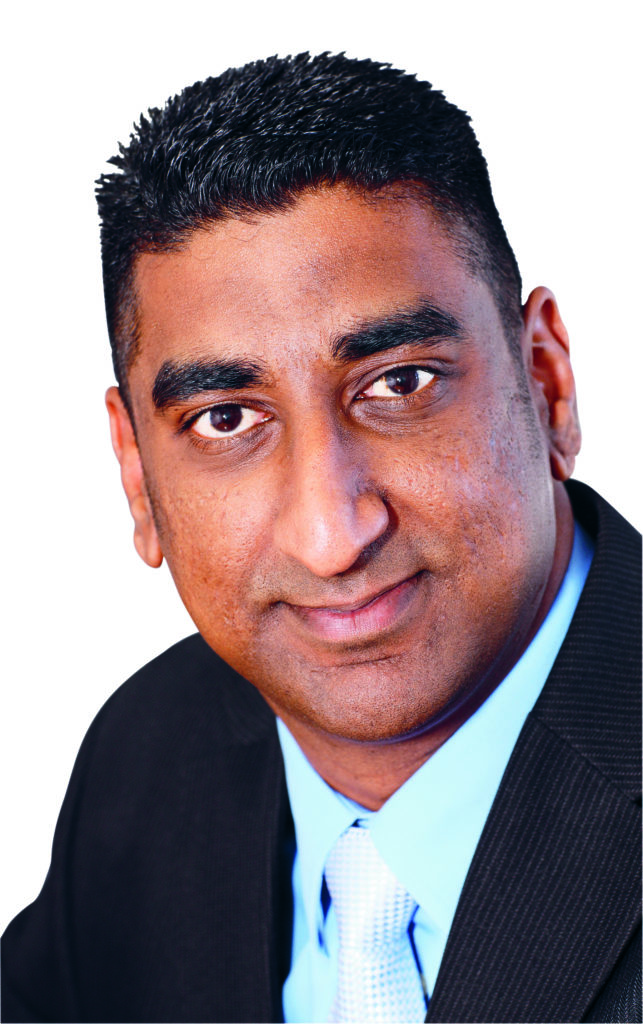How has the role of the financial adviser shifted? Theesan Moodley, General Manager: Intermediaries, Sanlam, shares insights on how 2020 has brought three major evolutions.
“What clients expected from a financial-adviser relationship in the past and what they expect from it today is different.”

General Manager: Intermediaries, Sanlam
It’s no exaggeration that, vaccine or not, we won’t be returning to what used to be ‘normal’ anytime soon. The changes we have all been forced to make in light of COVID-19 will be with us for the long haul – meaning less face-to-face interaction, more digital savviness and increased levels of worry. This invariably has an impact on the role of the financial adviser, with the natural evolution we’d already started to see, being fast-tracked.
We see this in two distinct aspects: the role of technology and the change in client expectations. What clients expected from a financial adviser relationship in the past and what they expect from it today is different.
Three areas where change is most noticeable
THEN: In-person meetings
NOW: Zoom calls, WhatsApp and the wave of technology
The way we communicate has changed. Twenty or thirty years ago, the flow of information was very limited. But today, it’s a lot quicker – think of a family WhatsApp group. And to a large degree, open communication is what clients are looking for. They’re not necessarily looking for a phone call, but they want to be kept in the loop. We can also ascribe this to clients wanting more control over their finances and wanting to understand what’s going on.
Sanlam has been ahead of the curve with adopting future technologies. In 2020, we saw an exponential rise not only in video calling but also usage of our e-signature platform. We instituted the e-signature platform in 2016 already. It effectively allows you to sign a document anywhere in the world. You can literally be on the golf course – as long as you have access to a network and a mobile device, you can sign the document.
As a practical example of how digital adoption has grown: in the first quarter of 2020, an average of 12 500 documents were being uploaded to our e-signature platform per month. By the second quarter – mid-lockdown – that number jumped to 40 600, with a record 57 800 uploaded in July. Advisers knew they would have to adapt quickly to new technology.
There is also not a generational divide between tech-adopters. There’s a bit of a misnomer that younger clients are more comfortable with digital, but the underlying requirement is about convenience. Generation X, Baby Boomers and millennials all feel the same way about this – they don’t want to waste time, they want things to be convenient. Even grandparents are now on Zoom!
THEN: Impersonal once-off service
NOW: Empathetic, knowledgeable and in-depth service
Clients’ needs have changed. Not only what they want from the relationship, but how they engage with us in that relationship has changed quite significantly over the last couple of years. No longer do clients want to sign a document and only hear about it again when the debit order goes off. They want to know the details of the process and follow along every step of the way. Clients also have access to more information than ever before, which is another factor that advisers have to skillfully navigate.
Just like people googling their symptoms before going to the doctor, clients will have more input than before – and it is the adviser’s role and responsibility to consider the client’s needs holistically, to identify, prioritise and to provide satisfactory solutions. It’s about being able to demonstrate the expertise and then advise clients on the most appropriate to address their needs systematically.
THEN: Advisers only pushed products
NOW: Advisers build relationships
In the past, it was often seen that a person would simply push products, whether life cover or insurance or retirement solutions – and often they would specialise in one type of product. Today, many advisers have moved to a more holistic, and client- approach. These days, it’s moved on from being purely about sales to helping clients make the right decisions around their financial freedom. During the COVID-19 pandemic, the adviser’s role was undoubtedly to reassure clients, ensure they stay the course, even though it may be difficult and even though other factors are impacting on their finances.
The adviser should not only have technical knowledge about all the products in their portfolio, but they should also know their clients on a granular level, looking at their aspirations and delivering on that. It’s about going back to basics, and wearing many hats – that of supporter, mentor and financial coach. And if you don’t know what they need, ask. Ask your clients what they want and what they expect in terms of contact. Talk to them regularly and personalize your communication with them. It’s up to us to make a difference to our clients’ lives, and the generations beyond them.
We have a great opportunity to build relationships that become generational.


